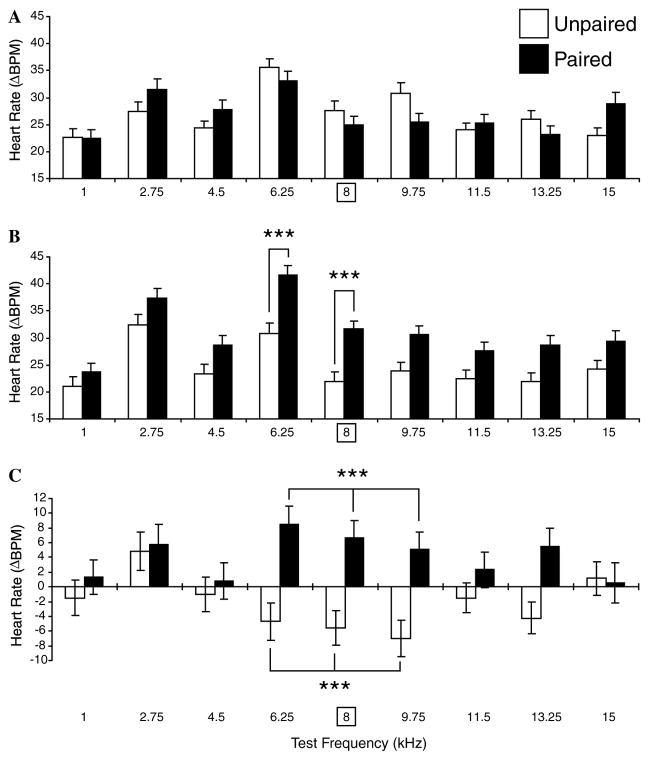Fig. 8.
Heart rate frequency generalization gradients. Average cardiac responses (changes in beats/min, ΔBPM) to test tones (±SE) for all frequencies and both groups (Paired = black bars, Unpaired = white bars) at baseline (pre-training) (A), post-training (B), and within-group differences (C). (A) The groups did not differ in response to tones during the pre-training baseline period. (B) Cardiac generalization gradients were significantly different after training (p < .001, ANOVA). The differences were confined to the 8.0 kHz CS frequency and its immediately adjacent neighboring frequency of 6.25 kHz. (C) Within-groups comparison of the pre- and post-training responses did not reach statistical significance for any single frequency but grouping the nine test frequencies into consecutive subgroups of three showed that pairing produced significant increases in cardiac responses to frequencies centered on the CS while unpaired stimulus presentations produced significant decreases in these same frequencies. The former indicate that pairing induced CS-specific memory while the latter may index frequency-specific habituation. In this and Fig. 9, three-pronged forks denote statistically significant change in the designated triad of frequencies.

